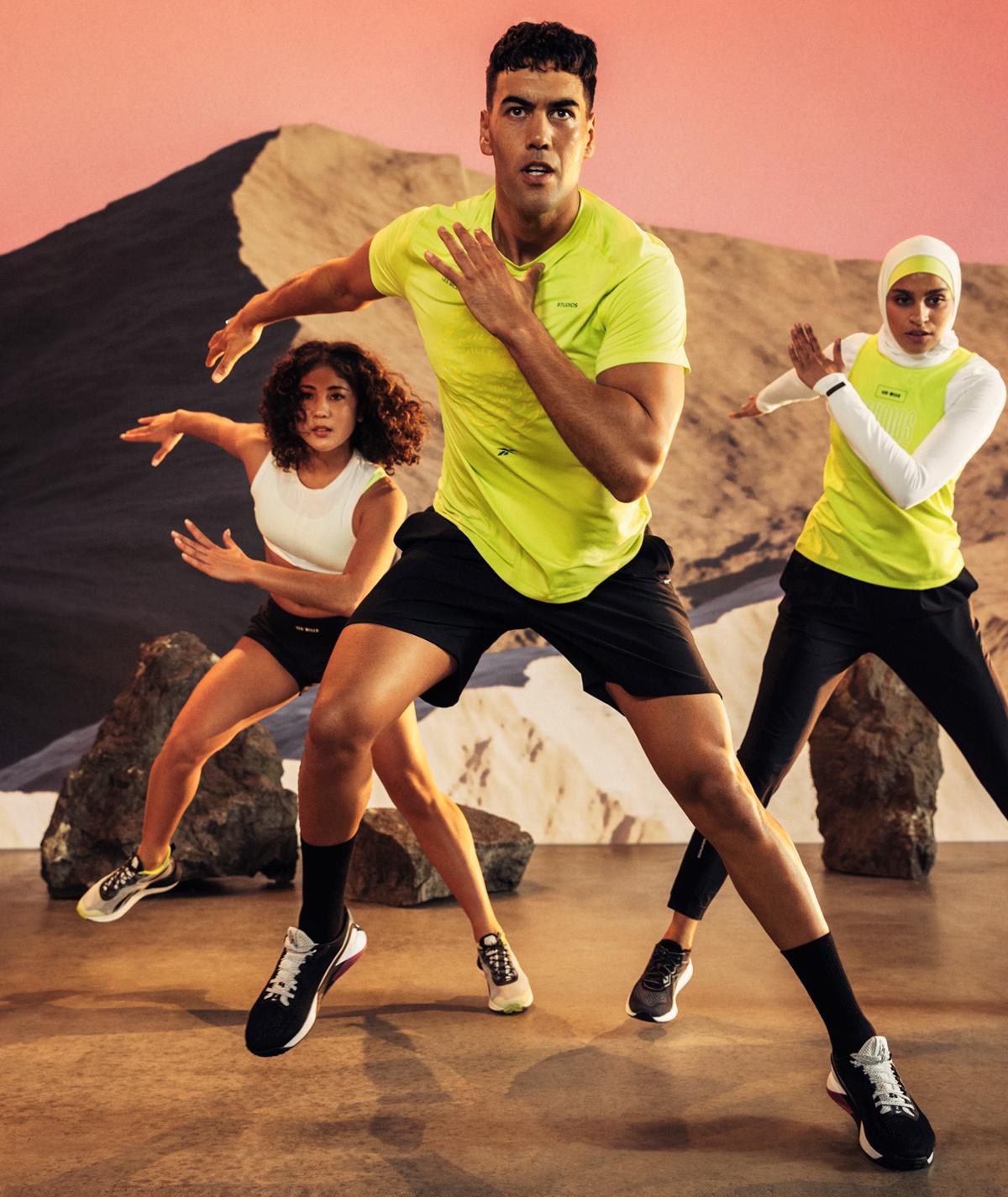The bounce back is on according to research from Les Mills, which has found gyms around the world are experiencing a live revival, with fitness fans proving eager to get back to working out in gyms.
The study spanned the USA, Brazil, the UK, Germany, Norway, Sweden, Finland, Denmark, Saudi Arabia, the UAE, China, Japan, Russia, Australia and India and discovered seven key trends.
1. The new fitness industry landscape
The pandemic forced all businesses to re-think their go-to-market strategies, but gyms worldwide are making strong recoveries in terms of member returns and financials. Many operators have used the pandemic as a catalyst for a completely new approach to meeting people’s fitness needs, while it has prompted consumers to prioritise their health: 50 per cent of the sample focused more on their wellbeing in 2021 than previously, while 82 per cent regularly exercise (or soon plan to).
Of those who exercise, 75 per cent do gym-related activities, making fitness the world’s biggest sport.
The report finds clubs worldwide have made strong recoveries since reopening and in markets where restrictions have lifted, operators are reporting increased member activity compared with pre-COVID levels, and decisive eagerness among new joiners.
2. Live revival
The report found class attendances to be at 120 per cent of pre-COVID levels in markets where restrictions had been lifted. Despite fears the home fitness boom would spell the end for fitness facilities, research suggests social live fitness experiences are driving club recovery, with 85 per cent of gym goers stating they’re interested in trying live classes in their health club.
After a year of enforced home workouts, appetite for live fitness experiences in groups is soaring. Two-thirds of gym members (67 per cent) say they prefer working out in groups, while live classes in clubs are nearly twice as popular as doing livestream classes at home (favoured by 44 per cent of members vs 23 per cent).
Les Mills founder and executive director, Phillip Mills, says people were making up for lost time in social settings: “Many people had missed the thrill of a busy class and the extra motivation you get from working out with others while being led by a rockstar instructor.”
3. The human factor
Two-thirds of gym members prefer working out and strong consumer demand for social connection is driving the live revival.
Great instructors are identified as the single most important factor when choosing a live class, favoured by 28 per cent, ahead of the quality of music (24 per cent) and type of class (21 per cent).
Having great people is particularly important for winning new members: 30 per cent of club prospects say a good atmosphere is a key factor in choosing a gym, while 59 per cent say staff are also a consideration.
“Despite the digital advances made during the pandemic, it’s our people who drove members to join clubs in the first place and as you’ll see in this report, it’s our people who are proving the key to bringing them back,” says Mills.
4. The secret sauce
Although 80 per cent of gym members plan to continue using digital workouts, live classes are more than twice as appealing as livestream options at home.
Striking the perfect balance of live and digital workouts is a question taxing many club operators currently. Omnichannel fitness – a blend of in-gym and digital home workouts – is tipped to gain traction, with the majority of exercisers (59 per cent) favouring a 60:40 split between gym and home workouts. Far from being simple stop-gaps to tide the industry over during the pandemic, livestream and on-demand have become vital additions to clubs’ long-term offerings, with 80 per cent of members planning to continue using them.
Seamlessly linking live and digital will be key to club success. High-class digital offerings can help clubs win new fans online, build brand affinity and convert them to becoming full members.
5. HIIT is still hot
Having dominated most of the last decade, HIIT is still the most popular fitness class, favoured by 32 per cent of participants, closely followed by indoor cycling at 30 per cent and dance classes at 29 per cent and stretching and mobility at 28 per cent.
Thirty two per cent of consumers list HIIT as their favourite class format. But it’s not just HIIT-heads who are loyal – 58 per cent of members say they would likely cancel their membership if their gym took away their favourite class, regardless of the genre.
Participants are also highly discerning, with 86 per cent choosing to do branded classes and 62 per cent stating the presence of quality elements (the quality of the music, instructors, equipment and choreography) are key to deciding which classes they attend.
In a world of endless quantity, it has never been more vital to focus on quality, particularly from a digital perspective.
With YouTube chock-full of free, average fitness content, clubs need to ensure they’re providing world-class content to keep their members engaged and willing to pay.
6. Beginners are embracing fitness
Lockdowns have also spawned a new generation of fitness fans, with 27 per cent of regular exercisers describing themselves as absolute beginners. Who are these new market entrants and what do they want from a fitness experience?
Opportunities abound for the health and fitness operators who can appeal to these groups and understand the unique barriers to exercise they face. Although 81 per cent of beginners are interested in group activities, 66 per cent say they currently prefer to exercise alone, suggesting a confidence chasm which needs to be bridged before newbies feel fully comfortable.
Instructors and wider staff have a key role to play in ensuring they feel welcome, while helping beginners find intrinsic motivation to exercise will be key to their long-term adherence.
7. Total fitness transcendence
The workplace wellness market is opening up new opportunities for health club operators.
As home-working becomes more prevalent and the boundaries between work and play are blurred, so too are the distinctions around the provision of fitness services, creating significant opportunities for clubs.
Employers are increasingly recognising the benefits of an active workforce and their responsibility to support this, while employees are gravitating towards companies which care, so the offer of quality fitness services is becoming a key differentiator.
The impact that wellness offerings can have on both work performance and employee health is also accelerating their prevalence, creating lucrative opportunities for omnichannel fitness providers to reach lucrative new audiences.
For clubs, the ability to demonstrate the scientifically proven impact of workouts will place you in a strong position to succeed in the workplace wellness market, where return on investment carries great weight among decision-makers.



























































